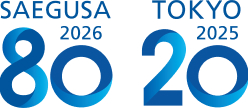[October 2015] Movements Following the Supreme Court Decisions Regarding Product-By-Process Claims
2015.10
SAEGUSA IP UPDATE
1.Movements Following the Supreme Court Decisions Regarding Product-By-Process Claims
The Supreme Court (SC) of Japan made decisions concerning product-by-process (PBP) claims on June 5, 2015. Following the SC decisions, the Japan Patent Office (JPO) revised the Examination Guidelines for Patent and Utility Model (EGPU) and the Examination Handbook for Patent and Utility Model (EHPU), and released their revised versions on September 16, 2015. The revised EGPU and EHPU are applied to examinations conducted on or after October 1, 2015.
The revised EGPU and EHPU (English versions) are outlined below.
2.Revised EGPU and EHPU
(1) In the aforesaid decisions, the SC stated that a product claim reciting a process for manufacturing the product will be considered as meeting the clarity requirement (requirement under Article 36 (6) (ii) of the Patent Act) only if there exist circumstances where it was impossible or utterly impractical to directly define the product by its structure or characteristics at the time of filing the application (“impossible or impractical circumstances”).
In accordance with these decisions, the revised EGPU refers to PBP claims in Part II, Chapter 2, Section 3 (Clarity Requirement), Items 4.3.1 to 4.3.3 (pp. 20-22).
More specifically, the revised EGPU states in Item 4.3.2 (pp. 21-22) that the “impossible or impractical circumstances” include the following:
(ⅰ) It was technically impossible to analyze the structure or characteristics of the product at the time of filing.
(ⅱ) It required an excessively large economic expenditure or large amount of time to carry out the work necessary to identify the structure or characteristics of the product.
(2) The revised EHPU refers to PBP claims in Sections 2203 to 2205, Part II, Chapter 2: Requirements for Claims (pp. 33-38).
Section 2204 (pp. 34-36) explains, with specific examples, the criteria the Examiner uses to determine whether an examined claim is a PBP claim.
Section 2205 (pp. 37-38) explains, with specific examples, the criteria the Examiner uses to determine whether there exist “impossible or impractical circumstances” when a claim is determined to be a PBP claim. The Examiner shall determine that there exist “impossible or impractical circumstances” unless he/she can indicate a concrete reason for doubt regarding the Applicant’s argument and/or proof of the existence of such circumstances.
When an amendment is made after the issuance of a Final Office Action, made when filing a request for an appeal against the Examiner’s Decision of Refusal, etc., such an amendment is allowable only when it is directed to a specific purpose, such as clarification of unclear wording in the claim (Article 17bis (5) of the Patent Act).
Section 2203 (p. 33) states that even in such a case, an amendment to define the product by its structure or characteristics rather than by its process of manufacture, or an amendment simply to change a product claim into a process claim, will be allowed, since the Examiner shall recognize such an amendment as clarification of unclear wording in the claim.
3.Our Remarks (Points for Consideration)
(1) Amendments after filing or after entering national phase:
We will consider adding manufacturing method claims corresponding to the PBP claims in the Claims, if necessary.
(2) In response to an Office Action:
When we receive an Office Action rejecting a PBP claim on the basis of lack of clarity, we will consider:
(ⅰ) arguing that there exist “impossible or impractical circumstances”;
(ⅱ) amending the PBP claim so as to define the product by its structure and/or characteristics;
(ⅲ) changing the PBP claim into a manufacturing method claim; or
(ⅳ) deleting the PBP claim.


